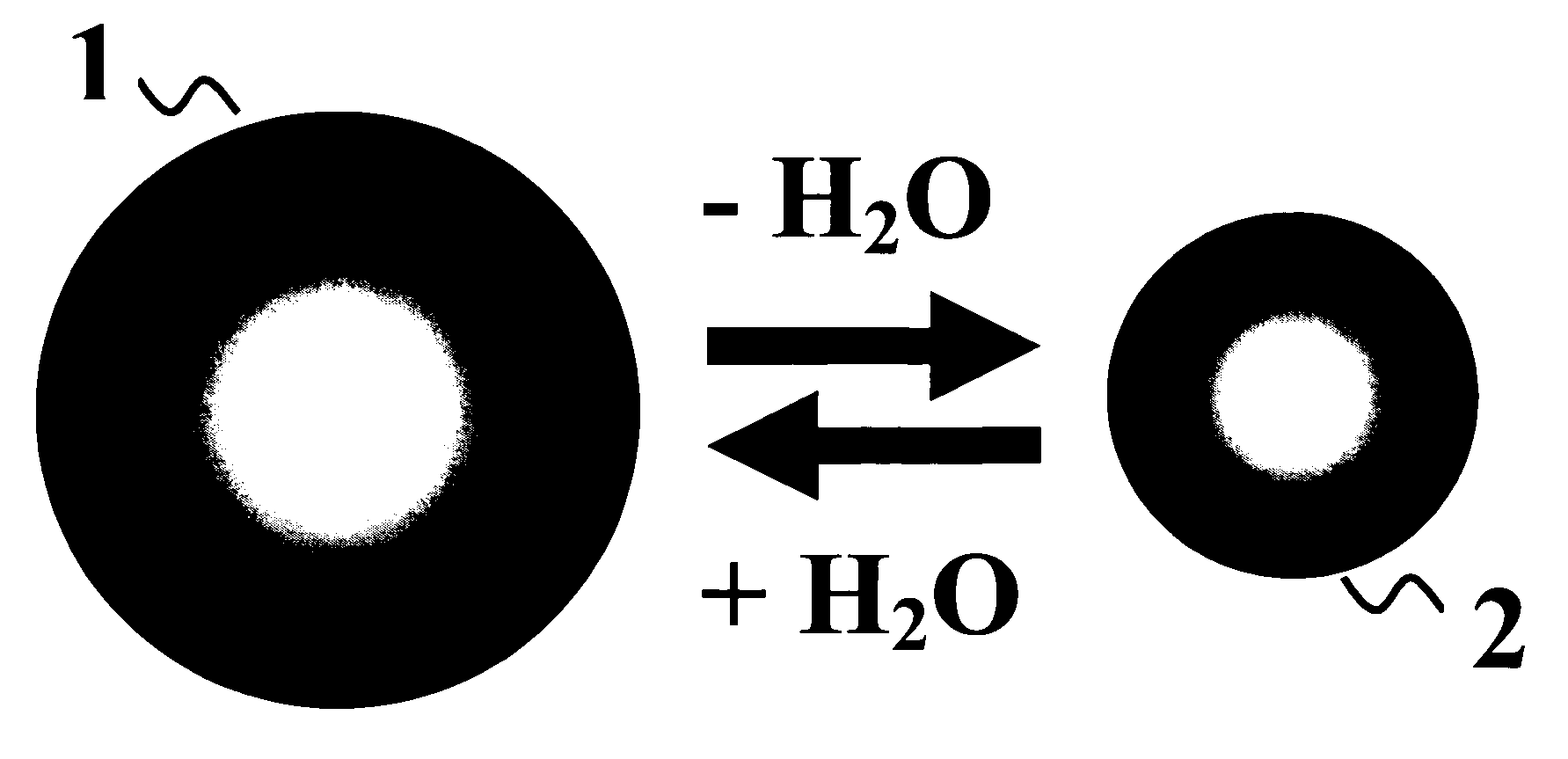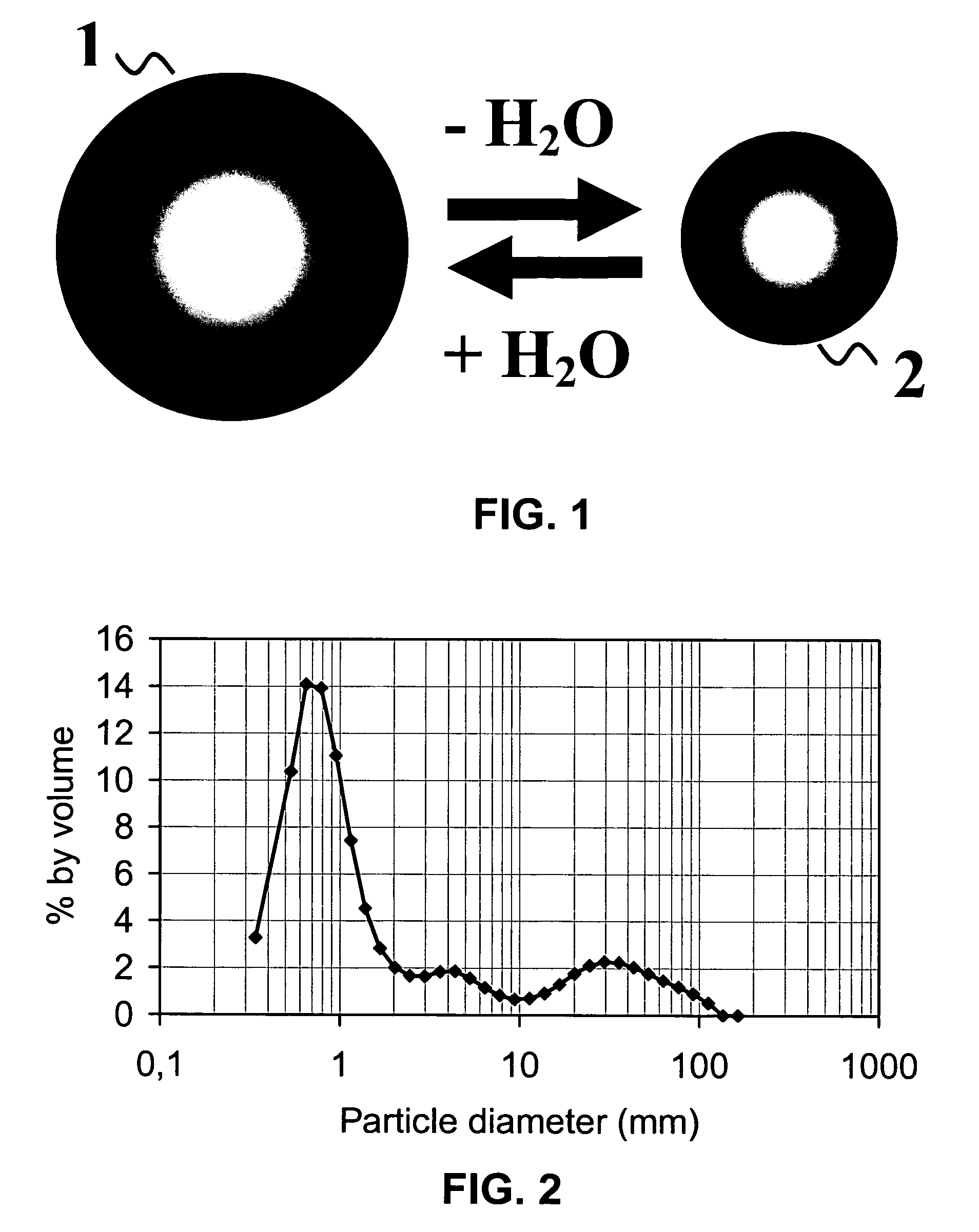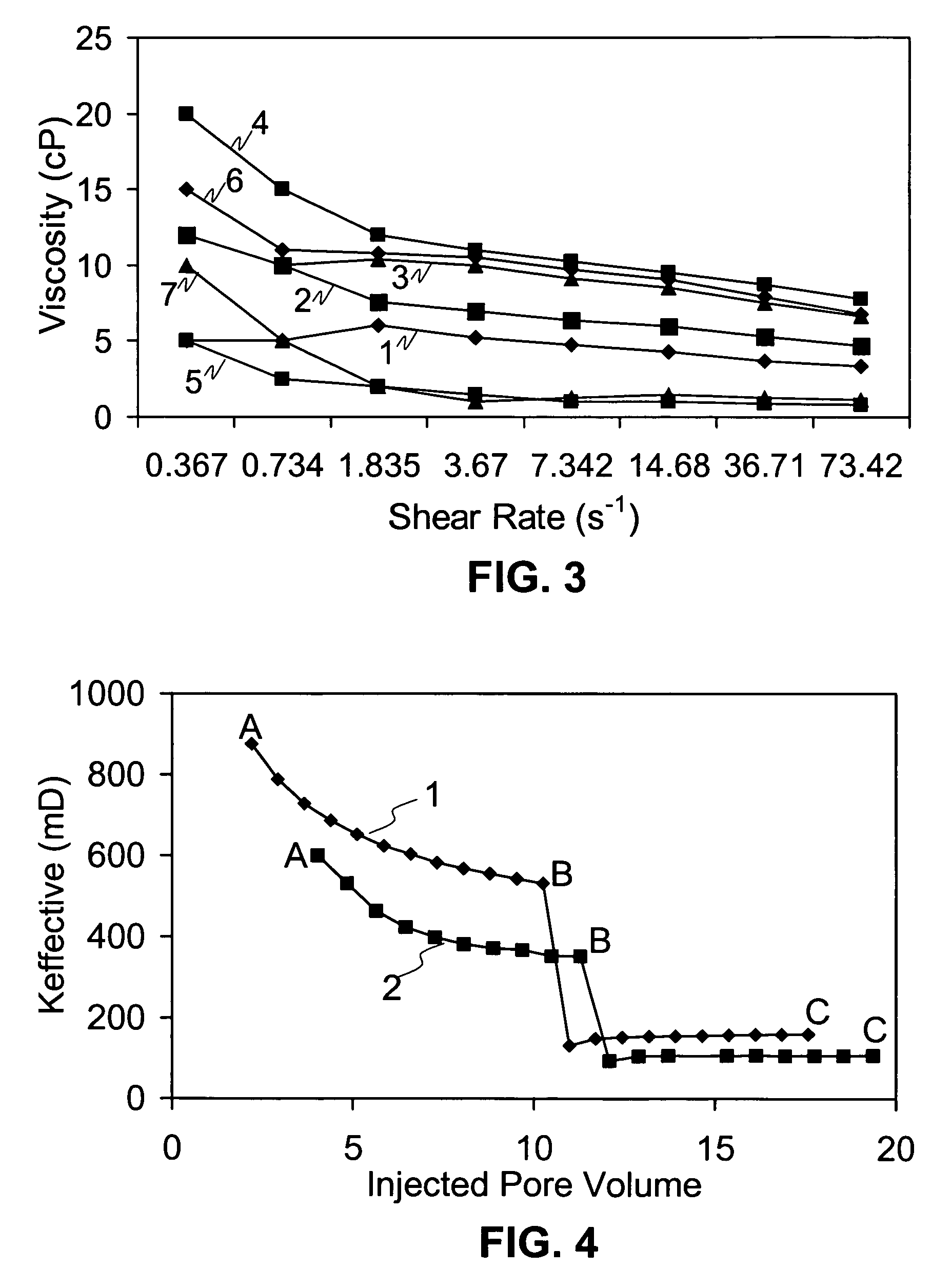Process for the selective controlled reduction of the relative water permeability in high permeability oil-bearing subterranean formations
a technology of subterranean formations and relative water permeability, which is applied in the direction of fluid removal, chemistry apparatus and processes, and wellbore/well accessories, etc., can solve the problems of increasing pumping operation costs, accelerating the decline of oil production, and reducing the relative water permeability of oil-bearing formations, so as to achieve selective and controlled reduction of relative water permeability, high productivity, and high permeability fields
- Summary
- Abstract
- Description
- Claims
- Application Information
AI Technical Summary
Benefits of technology
Problems solved by technology
Method used
Image
Examples
Embodiment Construction
[0053]The present invention relates to a selective process for the control of water permeability of oil-bearing subterranean formations aimed at high productivity and high permeability fields, the process being performed using seawater- or brine-soluble polymers. Such polymers are employed combined to crosslinked polyacrylamide-based polymeric microgels of controlled particle size distribution.
[0054]Broadly, the process for the reduction of the relative water permeability of the water production interval, in the reservoir area contiguous to any well bore, comprises introducing in the area to be treated a polymeric aqueous solution followed by a brine slug and a polymer / microgel suspension slug, said slugs being injected from said well bore. Later on the well is put into production for extraction of oil and / or gaseous hydrocarbon. After the treatment, the permeability to oil and / or gaseous treatment in the treated area is negligibly affected, while the permeability to water is strong...
PUM
 Login to View More
Login to View More Abstract
Description
Claims
Application Information
 Login to View More
Login to View More - R&D
- Intellectual Property
- Life Sciences
- Materials
- Tech Scout
- Unparalleled Data Quality
- Higher Quality Content
- 60% Fewer Hallucinations
Browse by: Latest US Patents, China's latest patents, Technical Efficacy Thesaurus, Application Domain, Technology Topic, Popular Technical Reports.
© 2025 PatSnap. All rights reserved.Legal|Privacy policy|Modern Slavery Act Transparency Statement|Sitemap|About US| Contact US: help@patsnap.com



